Tracking BJP manifesto on Transport and Railways
This is the first manifesto of a political party where Transport or Railways has been cited as one of the item giving due importance to its role in the development of a nation. Therefore, it is but natural that Railways is going to be in limelight in coming years, opening opportunity for adding infrastructure and improvement. It is also a challenge for the Railway Management to make best use of this opportunity in right perspective .
With BJP committed towards its manifesto, it is important to check what is achievable by 2019 and should be stressed upon. There are two main headings on page no. 33 namely Transport and Railways.
TRANSPORT
It states that BJP realizes the importance of travel for the vibrancy of economy and social unity and identifies four areas of thrust.
1. Create public transport system to reduce dependence on personal vehicle to reduce cost, time to travel as well as ecological cost.
There is no doubt that an integrated public transport system is the need for any developed nation. A developed country is the one in which the rich people use public transport. In a landmark Delhi High Court judgement, the Hon’ble High Court advanced the idea that transportation facilities are for moving people, not cars, and should favor all users, not just the minority fortunate enough to use private cars. Public transport is frequently the sole means of conveyance for the poor and lower middle-income group. It improves opportunity for livelihood, education, health care, recreation. For senior citizen, person with disability and children, it is the public transport they rely upon.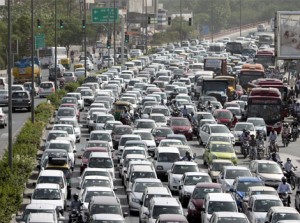
The subject being part of the manifesto, the BJP Government will certainly make its intent clear shortly. The policy when framed correctly and carried out in all its earnestness, with the additional objective of getting the rich to prefer public transport instead preferring personal car, will take India to the status of a developed country.
“Is it actually possible to shift transport option of people from personal car to public transport?”
The most significant challenge in this regards are:
- Social image of public transport is for the poor. As the income level goes up, people like to demonstrate their enhanced income status by shifting mode of transport from public to personal car. The public transport system is seen as the only option for people who cannot afford their own vehicle. People generally tend to look down on someone who is using public transport. Will it be possible for the Govt. to remove this tag?
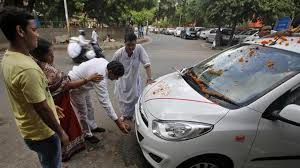
- Integrationofdifferentmodeofpublictransportto benefit passenger such as
- Road and Rail, Road and Metro, Rail and Metro etc. All these modes of transports are operated by different Govt. agency and there is complete lack of integration as is evident on auditing of the completed projects. The Govt. should show its intent and initiate last mile interlinking of these modes of transport of existing network for easy switch-over.
- Walkways/sky-walks for last mile (1-2 Km in three-four direction of the station) connectivity with Metro/Rail. It is a nightmare for anyone to walk even a distance of 500 meters to his house or office while making his way through a spread of vehicle all around, encroachment of pathways, potholes, garbage and human waste etc. With this being the scenario existing all over India, it is almost impossible to encourage car user towards public transport. Covered Walk and sky-walks shall be built as a part of metro project.
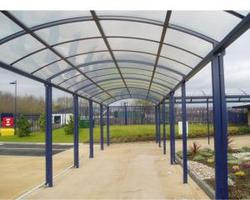

- Infrastructure to motivate people using cycle to the nearest metro/rail head
- Feeder bus service from the metro station to cover a nearby distance of 3-4 Km.
- Feeder and regulated three-wheeler/battery operated electric vehicle etc.
- Unless such issues addressed, any amount of public spending for building infrastructure will not help. Integration is completely deficient over existing projects, even fare collection for road not linked to Metro fare.
To demonstrate good intention, it will be prudent for the Govt. to immediately take up the target of transferring mode option from private to public by addressing issues on existing infrastructure.
2. Launch an integrated Public Transport project which will include roadways, railways and waterways
There is no doubt that this is the need of the time. To demonstrate good intent, carry out following integrated transport need of the passengers.
- Provide integrated bus feeder to the metropolitan railway station to evacuate passengers traveling from a distance of about 100-130 Km to the nearby satellite city.
- Provide integration for convenient switching from one train to another with one passenger ticket.
- Integration to include one passenger ticket for the entire journey on a different mode of transport.
3. Develop waterways for passenger and cargo transport
This is applicable for part of the country where the river/canals are wet for the most part of the year. From the present state of affairs, it may be difficult to compete with road/rail.
4. Develop a national logistics network for faster movement of goods
It should be integrated logistic hub which already exists like CONCOR. It has also been opened to private players. As per the statement made in the Parliament during budget-2012, the Railways will set up Logistics Corporation of India. It is an effort to graduate from a bulk commodity carrier to a full logistics solutions provider.
RAILWAYS
BJP considers Indian Railways a lifeline of the country and committed to its modernization with the sole objective of national development rather than political exigency. There are 10 points identified in the manifesto as detailed below.
1. Hinterland will be connected to the ports through strategic new Rail networks
The hinterland is an inland area supplying goods, especially trade goods to the port. The steps in this direction have already been initiated in the form of Dedicated freight Corridor. It may be on purpose if this project is expedited with a time bound completion.
2. Agri Rail Network will be established with Train Wagons designed to cater to the specific needs of perishable agricultural produces like milk and vegetables as well as light weight wagons for salt movement.
This does not require building a separate network. There is ample scope to develop refrigeration parcel vans which can be attached to superfast trains as 25 or 26th coach in the formation of existing trains. Refrigerated Parcel Van (BG) is in the production range of RCF/Kapurthala. This may only require logistics facility at important stations with facility to load and unload at washing lines. This can be implemented with a desired result in a short span to control price rise.
3. Tourist Rail including pilgrimage Rail
There are two types of tourist namely local and other international. For international tourist, tourist trains like Palace on wheel etc. are already plying. There may be a few additional to this. However, it will be a boon to national passenger, if it is opened to them in Indian currency with fare depending upon the pocket it can afford. Same is the need for pilgrimage trains. Pilgrimage trains are running now also. The Govt. shall explore the possibility of running Full AC trains. The coach shall provide opportunities not only for travel but also stay in the night. Bio-toilet shall be provided. There is a general belief that tourism is for those having pounds and pilgrimage for those having pennies. This dis-parity shall be reduced. IRCTC launching Tourist package trains for Indian Tourist on lines with Maharaja type tourist trains.
http://indianexpress.com/article/lifestyle/destination-of-the-week/irctc-new-semi-luxury-train-delhi/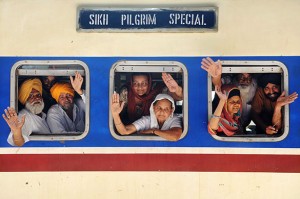
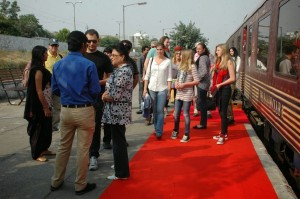
4. Railways modernization, including state-of-the-art technology
Modernization has not been defined. It is in the interest of the nation building to define it as “Indigenous modernization” encouraging local innovations, resources and skill etc. It has become a general tendency to look beyond the Indian Railway territory to that of European/Japanese Railways about the scope of modernization. In fact, there is a general perception that unless it is imported, it is not called modernization. This myth shall be broken with a clear verdict of bringing the concept of modernization with indigenous resources. The Govt. should define it in right perspective.
5. Special focus on developing skilled human resources to meet future demand
This is a continuous process going on since long and playing a crucial role running of Railways. There is no limit what can be done, but it is important to study what is missing in our trained manpower required to be developed. It is not a difficult job except sincerity. A strict discipline to use the right tool and wearing safety items particularly in Govt. sector will make a beginning in this direction.
6. Prioritize Safety and invest in long required overhaul of stressed infrastructure, strict norms and warning system
Safety has been the concern of Indian Railways all along. The mission statement of each Minister of Railways begins with Safety, Security and Punctuality. There is nothing new in this. But the most important issue that it raises is “How Commissioner of Railway Safety permitting, running of trains on such a long required overhaul of stressed infrastructure”. It is important to identify the key areas which ensure safety compliance, otherwise there will be competition between different departments to demand the maximum in the name of safety.
7. Modernize and equip all stations with requisite infrastructure and public utility
This is an ongoing activity to focus on passenger amenities. But the most important passenger amenity that is generally forgotten is
- Ease in issuing tickets
- Ease in entry to the station
- Cleanliness
- Space in the train
- Simple catering without overcharging
- Facilities of physically disabled person missing completely at a station. A physically disabled person cannot dream of travelling alone without escort. Read news clipping of Deccan Herald or an independent audit will confirm this without any doubt. http://www.deccanherald.com/content/411635/railways-indifferent-towards-disabled-commuters039.html. A begining has been made in this direction if news item is to be believed that Railways will launch a new train with all its coaches equipped with Braille-embedded signages on berths, toilets, wash basins and doors as part of the 100-day agenda. .
8. Convert all unmanned crossings into manned crossings in a phased manner
There is nothing new in this. The budget speech Ministry of Railways gave a commitment to the Parliament for manning of all unmanned level crossings by March’2015, which is enshrined both in the Indian Railway Vision 2020 and Budget Speech 2010-11, “ This is a commitment to the Parliament by Railways to complete the conversion of all unmanned level crossing into manned by March 2015.
9. Initiate R&D for indigenous Railways, coach design and signals
R&D is looked after by RDSO at Lucknow under the administrative control of Railway Board. There is hardly any research of which Indian Railways is proud of and can talk with pride in any international conference. This is not because of any intelligence or diligence on part of its manpower but apathy from the Railway Board and forcing the organization to work at its whims and fancies. The prime research necessary to be undertaken at RDSO is on the subject of Rail and wheel interaction and independent simulation of train run. This can only be possible if they have their independent test track. It was sanctioned long back but for lack of sincerity, it could not be come into existence till today.
10. We will launch Diamond Quadrilateral project – of High Speed Train network (bullet train).
Indian Railways after all deliberations have decided to upgrade the existing network to 160-200 Kmph instead of perusing trains at 300-350 Kmph. http://globalrailelectrica.com/rail-news/will-raising-shatabadi-train-to-160-kmph-happens/.
With the new BJP Govt. in place, will Railways stick to their existing stand of already announced action plan to raise the speed to 160 Kmph for which the cost per Km may not be more than Rs. 10-15 Crs/Km. Why BJP manifesto considers high speed train network as a benchmark step towards the development when its existing road/rail/metro network is in dire need of re-building. It is only because of the successful marketing of road quadrilateral project during previous BJP tenure. This may be a right step to find a place in the manifesto, but does it promises a better future for a large population of the country. It is not, and Govt. in position shall reconsider alternatives for infusing money to demonstrate real development in the field of transport that suits its larger population. The alternatives for spending during the 2014-19 period are:
-
Stick to the stand taken by Railway Board todevelopShatabdi network at Max.160Kmph with average speedof120Kmph. This will benefitcitiesinthe vicinity of 500 Km for faster and economical travel. A target forcoveringa distanceof2000RKM to a speed potentialof160Kmph is possible in five years. It is important to note that existing rolling stock (locomotive and coaches) is fit for 160Kmph except spending money to meet the safety standards.
There is a news the other day in Hindustan times on 2nd May 2014 titled “Railways aflutter with Bullet train plans.” In fact, this may also be in Europe and Japan looking for a business opportunity in India. But certainly it will not be in the interest of the Railways as a organization, passenger and policy makers. It should shelve the plan of high speed train for at least 10 years and work towards many other meaningful act to revive Railways to meet the titled objective of “Railways as a life line of the country”
-
Quadrupling of the 100 Km route connecting the major metropolitan cities to run sub-urban trains to ease the transport infrastructure for millions of passenger commuting from nearby cities for livelihood. Delhi connecting to Meerut, Shamli, Sonepat, Mathura, Khurja and Rewari etc. are the most important route which will benefit a very large population with affordable sub-urban transport. The scheme to convert these section on lines similar to what is already prevailing over Mumbai and Kolkata Sub-urban and no need to go abroad with a begging bowl of technology. This will be the step towards indigenous modernization. The formation of Rapid Rail Transport Corporation for transport need of National Capital Region is complete waste of money with negative return and project will not be able to deliver significantly in the first tenure of NDA (2014-19). Read More “ An alternative to Rapid Rail Transport Corporation for transport need of National Capital Region” at globalrailelectrica.com.
-
One should not forget that high speed network is for running passenger train only as compared to the existing practice of Indian Railways where passenger and freight traffic co-exists. Indian Railways has always stated that passenger business is a loss making proposition, then how high speed network project can be financially viable. It makes a better sense to invest money towards freight traffic to meet other challenging areas described in the manifesto.
- To upgrade the existing route to 160 Kmph will require fencing at both sides. This will arrest trespassing which is rampant in almost all part of the Indian Railway network. Trespassing has been a main cause of loss of life due to hit by moving vehicle and this project will help saving loss of precious life of many. Read more http://globalrailelectrica.com/indian-railways/loss-of-life-in-train-related-accidents/
There is no doubt that spending Rs. 50000/- Crs towards Mumbai-Ahemdabad route will never benefit the society at large and poor. With average speed raised to 120 Kmph, the distance can well be covered in 4hrs. 30 minutes and acceptable to large population. High speed train fare will not be less than air fare, and will suit only to upper middle and high income group. The above alternatives will benefit the poor, create job opportunities, and a step in the direction towards sustainable development. The projects are foreseeable during 2014-19 period without much bothering for issues which generally retard projects such as land acquisition and environmental clearances.
You may also like:
- Where has 150 millions Indian Railway passenger gone?
- Why IR passenger traffic heading south?
- Why no steps to digitize issue of free travel pass…
- ‘Rescue’ Indian Railway passenger business through statistical indices ‘RSKU’
- Average speed of freight train over Indian Railways
- Mechanized measurement and inspection – a help to cut down…